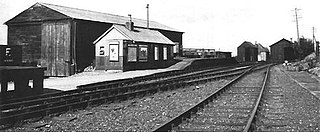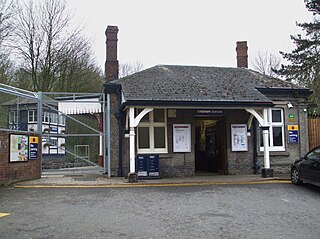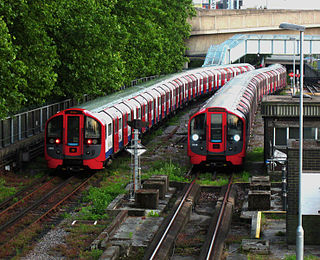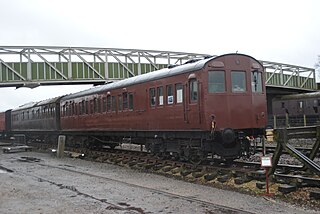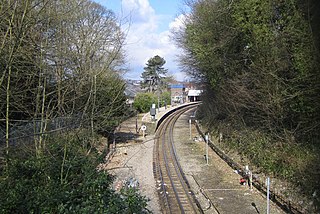Rolling stock
Electric locomotives

London Transport (LT) took responsibility for the twenty 1,200 hp (890 kW) electric locomotives used for hauling coaches on the electrified lines south of Rickmansworth. They continued in this service until working ended on passenger trains after the introduction of the A Stock multiple units in 1961. [22]
One locomotive is preserved as a static display at the London Transport Museum, [23] and another, No. 12 "Sarah Siddons", has been used for heritage events, most recently in 2011. [24]
Steam locomotives
LT also took over the MR's steam locomotives; however, on 1 November 1937 the later G, H and K Class steam locomotives were transferred to the LNER, which took over all freight workings and became responsible for hauling passenger trains with steam locomotives north of Rickmansworth. From the early 1940s these were replaced by ex-Great Central Railway locomotives, now classified LNER Class A5. These were replaced by LNER L1s after 1948; ten years later in 1958, when the joint line was transferred to British Railways' London Midland Region, former London, Midland and Scottish Railway (LMS) locomotives replaced the L1s. [25] Steam working ended on passenger trains after the introduction of the A Stock in 1961. [22]
LT kept eleven locomotives for use in departmental work. From 1956 these were replaced by ex-GWR 0-6-0PT pannier tanks, to be replaced by diesel-hydraulic locomotives DL81 to DL83 in 1971. [26]
Two Metropolitan Railway locomotives survive, one A Class No. 23 (LT L45) at the London Transport Museum, [27] and E Class No. 1 (LT L44) is preserved at the Buckinghamshire Railway Centre. [28]
Coaching stock
LT inherited Dreadnought coaches and two Pullman coaches, used on the locomotive-hauled trains that travelled north of Rickmansworth. The Pullman coaches were withdrawn early in the Second World War; [29] however, the Dreadnoughts continued until replaced by the A stock in 1961. The Vintage Carriages Trust has three preserved Dreadnought carriages. [30]
The unelectrified Chesham branch was converted to autotrain working in 1940, in which the trains could be driven from each end, thus avoiding the time-consuming repositioning of the locomotive. [11] [31] LNER C13 Class locomotives were used for this push-pull working, along with two three-car sets of Ashbury bogie stock from the multiple units that had become surplus after the introduction of O stock. [32] The Bluebell Railway has four of the 1898–1900 Ashbury and Cravens carriages, and a fifth, built at Neasden, is at the London Transport Museum. [33]
Multiple units
London Transport inherited a number of different incompatible electric multiple units from the Metropolitan Railway. Between 1927 and 1933, multiple-unit compartment stock had been built in batches by Metropolitan Carriage and Wagon and by Birmingham Carriage and Wagon, to be used on electric services from Baker Street and the City to Watford and Rickmansworth. These were of three incompatible types, with different electrical equipment and engines. In order to make a uniform fleet, units were fitted with Westinghouse brakes and cars with different engines were regeared to allow these to work in multiple with other cars. In 1938, 9 x 8-coach and 10 x 6-coach MW units were redesignated London Underground T Stock. [34] The Buckinghamshire Railway Centre is home to two T Stock carriages. [35]

The joint Met&GW stock on the Hammersmith & City line, dating from 1905, was replaced by O stock that initially operated in 4- and 6-car formations, entering service from 1937. [8] These trains were entirely made of motor cars, and this caused a problem with the electrical supply, so trailer cars were added from 1938. [36]
P Stock was ordered to replace all the remaining Metropolitan multiple units. A combination of 3-car units and 2-car units, to run in 6- and 8-car lengths, was delivered from July 1939. Two trailers were included in an 8-car formation, but these were designed to allow conversion to motor cars at a later date after improvements to the power supply. [37]
However, O and P stock were not compatible, having different electrical equipment. After 1955, trains were converted to PCM control and relabelled CO and CP stock as appropriate. [38]
F Stock trains had been built for the District Railway in the early 1920s. In the 1950s, a number became available for use on the Metropolitan line; they mainly worked the semi-fast Harrow and Uxbridge services, and ran on the East London line as modified 4-car sets. [39]
When the Amersham electrification project commenced in 1959, London Transport placed an order with Cravens of Sheffield for 248 cars of A60 stock to replace the T stock and locomotive-hauled trains. A further twenty-seven trains of A62 stock were built in 1962–63 to replace the F and P stock trains on the Uxbridge service. These were arranged as 4-car units which could operate as 4- or 8-car trains. [40] Four-car units operated on the East London line from 1977, and a 4-car unit operated the Chesham shuttle. [22]
In 1968, an order was placed for 35 six-car trains to replace the CP and CO stock on the Hammersmith & City and Circle lines. These were arranged as two units with a driving cab in the motor car at one end only, and were normally run as three pairs. These trains were designated C69 stock. [41]



